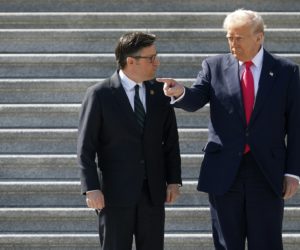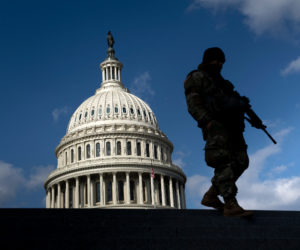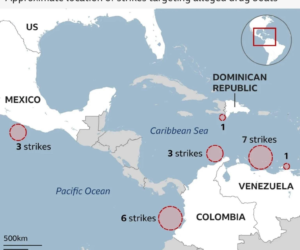By Brij Khindaria
The Paris Climate Conference (COP 21) is sinking in the quicksand of emotion and geopolitics, which are overwhelming the complex science highlighted by United Nations bodies dealing with environment and climate change.
The opening days attended by President Barack Obama this week were studded with catastrophic warnings and heroic declarations about the determination of governments, including the US.
Almost all governments agree with the UN experts that global temperatures are rising because of excessive carbon emissions and must be brought under control. The UN and many other experts predict climate and weather-related disasters if a start to lasting solutions is not made in Paris.
But politics stands in the way of effective remedies and there are no signposts yet to harmonizing the differences among governments.
Current indications are that some words will be found in the final declaration when the conference ends on December 11 to place a fig leaf over its failure to decree legally binding obligations on governments through a new Treaty.
Instead, some minor aspects will be considered as binding on governments that wish to voluntarily conform but the central issue of reducing carbon emissions to cap temperature increases to below two percent will not be binding upon any government.
Paris lacks a sense of urgency mainly because the truth of dire climate change predictions will not become known until at least 2050 or the end of this century.
Predicted freak weather behaviors are already visible as hurricanes, extreme cold or unseasonable heat, floods and mudslides around the world. But they are being seen as calls for more and better humanitarian aid in times of natural disasters rather than as powerful triggers for global cooperation to deal with a common crisis.
Other forecasts derived from scientific data are producing stifled yawns because they are far distant — for instance warnings about wars over water and massive transfers of population from Africa and elsewhere to Europe driven by natural disasters, drought and famine.
Meanwhile, Indian Prime Minister Narendra Modi is the accidental hero of COP 21. He is lukewarm to the wishes of President Barack Obama and European leaders because some Western arguments appear extravagant.
Many weather-related catastrophes may happen during the next 85 years but it will be impossible to establish causal links to India’s refusal in Paris to accept binding carbon emission targets and complicated carbon tax or trading systems.
The US and EU positions have more than a whiff of rich countries trying to preserve their living standards and privileges while telling India to make sacrifices. In fact, greater Europe is home to about 800 million people but it is asking more per capita from Indians than its own citizens just because India has 50% more people although each adds far less carbon to climate change.
The best practical moves so far are the suggested special funds that might total well above $200 billion over 20 years to develop clean energy. Some could emerge as part of the COP21 declaration or on its sidelines and would bring together governments, international financial institutions, multinational companies and American philanthropy (partly led by Bill Gates).
They would finance technology innovations for reducing carbon emission through cleaner uses and more alternative energies. Technological breakthroughs shared fairly around the world thanks to such funds could literally be lifesavers and save the planet.
However, the need is for at least $2 trillion in the next 25 years if there is a serious intention to mitigate the worst catastrophes forecast by the current scientific data through to 2050 and beyond. There is no prospect for a start to such a response at Paris.
Instead, developing countries including India are turning the climate response issue into an indictment of the rich countries, especially the US, which they say caused the problems. They want America and Europe to pay them through special funds for their future cooperation in reducing carbon emissions.
This kind of thinking illustrates the geopolitical divide. Delhi should not be asking the West to bankroll national actions to save Indians from awful climate events and air pollution. Taking those actions is any Indian government’s duty.
Yet India rightly points out the extremely high and incalculable costs of embarking on unpredictable paths to reduce carbon emissions. The more so since India’s development needs are huge and its per capita contribution to climate change is minuscule, compared with Europe and the US. Especially funded technology breakthroughs would help a lot.
The US is trumpeting a White House pledge to cut emissions by 26% by 2025 alongside China, which has pledged to cap its emissions by 2030 and then start reductions.
But Obama’s commitments to curbing American carbon emissions have not been believed in Paris because he cannot guarantee his pledges. Everyone in Paris knows that powerful US political and industrial lobbies are dead set against his core ideas, including the Clean Power Act, which is his key vehicle to build legacy before he exits power in late 2016.
Before then, he may not get a new Paris agreement through the Senate and the next administration might renege altogether on any deals he makes. Reneging is possible because any COP 21 agreement is unlikely to be the type of legal treaty that binds his successors. In any case, Obama cannot sign a Treaty without Congressional approval.
European Union positions, although more strident than Washington, also do not sound credible to others because member governments may never implement them. The EU is besieged by severe pressures on its internal unity stemming from persistent economic troubles and the nearly 1.5 million refugees and immigrants hammering at its frontiers.
The EU is also confronting an increasingly hard-faced Vladimir Putin of Russia who is interfering in Ukraine, Syria and Turkey, all of which are Europe’s near abroad. EU governments may end up scrambling for energy supplies instead of making citizens reduce carbon emissions.
Non-binding emission cuts announced so far by most countries could result in a 2.7 degree temperature increase by century’s end instead of 4-5 degrees. That might prevent the catastrophes a 5 degree change might bring but is not enough. (Some estimates say that a 5 degree drop in temperatures caused the ice age!)
Keeping the increases to under 2 degrees would avoid the worst effects but that is beyond everyone’s radar at COP 21.
Ends
















